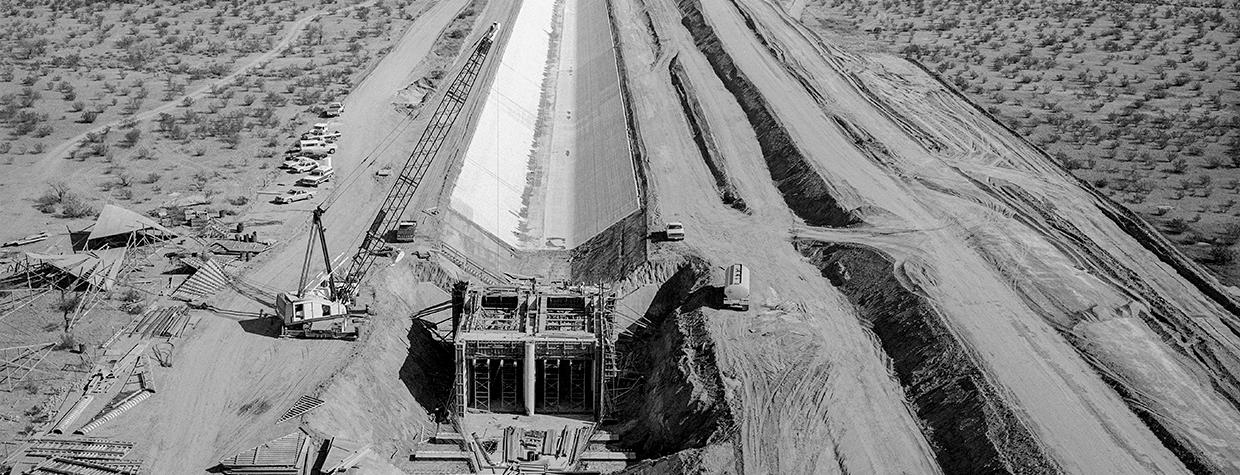From showers and baths to sinks and dishwashers, water is something we often take for granted. But the challenges of maintaining a feasible water supply in Arizona’s desert landscape have existed since people started living here. The Hohokam people were the first to design and build irrigation systems in the area, starting as far back as A.D. 200, according to the U.S. Bureau of Reclamation. That tradition continues today with the Central Arizona Project, which delivers water to more than 80 percent of the state’s population.
This year marks half a century since construction of the CAP began. But the road to the completion of the massive canal, considered the single largest renewable water supply in the state, began decades earlier.
In 1946, the first attempts at building the canal began with the organization of the Central Arizona Project Association. The following year, the bill to authorize the project was introduced in Congress. It failed to pass, and a later bill met the same result. Disagreements between California and Arizona regarding Colorado River water allocation hindered further attempts, and eventually, the U.S. Supreme Court got involved.
The court’s ruling in Arizona v. California, finalized in 1964, revived the project’s shot at congressional approval. “The concept … is awe-inspiring,” Tim Kelly wrote in Arizona Highways that year. “If the overall plan seems gigantic in design, an investigation of its full scope shows the project gigantic in potential.”
Four years later, the construction of the CAP was finally authorized. Construction began at Lake Havasu in 1973 and ultimately cost more than $4 billion. More than two decades after the project broke ground, in 1985, the system made its first water delivery, to the Harquahala Valley Irrigation District. Phoenix began receiving water from the canal later that year.
Today, the canal stretches more than 300 miles, from Lake Havasu to just south of Tucson. It delivers water to Maricopa, Pima and Pinal counties, as well as to some tribal lands. The CAP’s water is used for agricultural, municipal and industrial purposes.
While the fight for Colorado River water began long before plans for the CAP were developed, the issue remains prevalent today: According to the CAP, half of Arizona’s 22 federally recognized tribes have outstanding claims over water rights.

